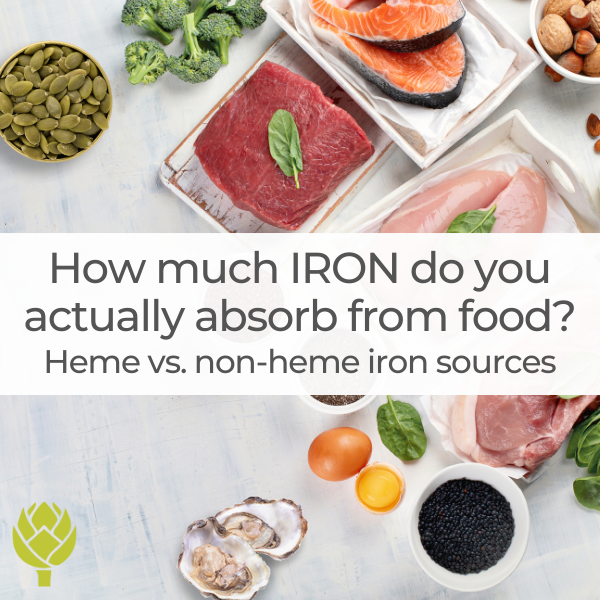iron is a critically important micronutrient. its roles include: oxygen transport (getting oxygen that you breathe in, to your tissues like your muscles and organs), DNA synthesis and cell division (how your cells make more cells to replace old ones), and energy production (iron is an essential ingredient for many proteins in your body to function properly).
a recent article published by JAMA revealed that about 14% of Americans have a "functional" iron deficiency. what does this mean? it means that even if you have "enough" iron when we look at your levels, not enough of it is actually available to be used to make red blood cells (a process called erythropoiesis) and do all those other jobs that iron needs to do!
i suspect this is for a few different reasons:
- we don't eat enough bio-available iron.
- most Americans have chronic, low-grade inflammation from metabolic disease: obesity, due to not enough movement and too much eating (particularly processed foods, fried foods, snacks, and sugar).
the first part is important: very little iron is actually absorbed from the foods you eat, especially if you are not eating a lot of HEME iron, which is the type of iron you get from eating animal products. NON-HEME iron is found in leafy greens, nuts, seeds, and grains, and it's not very well absorbed.

learn more about bio-available iron from a registered dietitian who really knows her stuff.
(also - if the meats you eat are not locally sourced, are highly processed, are not on the bone, and you don't routinely include organ meats in your meals, these meats are already quite nutrient-poor.)
the second part about inflammation is important because there is a small molecule that acts as a gatekeeper for iron to be available to do its job - in order to get let out of its storage units (ferritin is your body's "cupboard" of iron), a molecule called hepcidin has to unlock the cupboard to let the iron out. when you have inflammation happening in your body, hepcidin will not open the cupboard.
your body has a lot of "cupboards", but the biggest storage places are in your liver, bone marrow, and spleen.

so what does this mean for you, dear reader?
iron deficiency could be a contributing factor to your depression, fatigue, lethargy, restless legs syndrome, impaired immune function, poor cognition, concentration, and memory - even if you are not anemic!
- check-in with your nutrition: are you eating enough bio-available iron? menstruating vegetarian women need 26 mg/day (because less of the iron they are eating is absorbable). excess dairy/calcium consumption can cause iron deficiency (a big reason doctors ask about how much milk children are drinking, and advise families to limit this!). eating enough vitamin C with your meals can overcome the inhibition of iron absorption caused by phytate and polyphenols in plants.
- you can ask your doctor to check your iron levels, specifically: serum iron, ferritin, total iron binding capacity, and transferrin.
- consider supplementing, or changing your intake to include more heme iron. taking 325 mg of iron every other day has been shown to be just as effective as taking iron daily, and it's much easier on the stomach. (i like Thorne's brand because it doesn't bug my stomach, and i know the content of the supplement and its quality is good.)
More reading on iron absorption and bio availability from the American Chemical Society: https://pubs.acs.org/doi/10.1021/acsomega.2c01833


